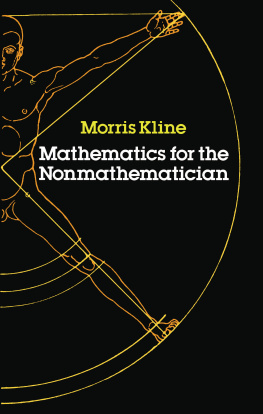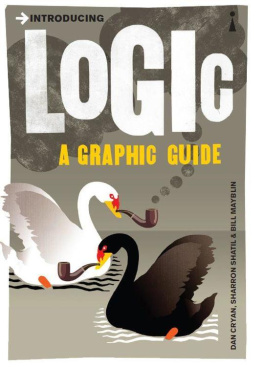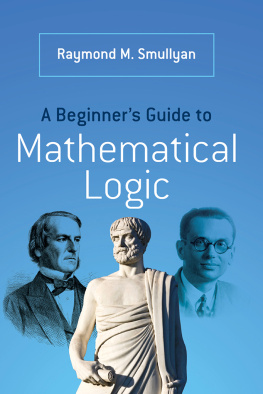Mathematical
Elegance
Mathematical
Elegance
An Approachable Guide to
Understanding Basic Concepts
Steven Goldberg

Transaction Publishers
New Brunswick (U.S.A.) and London (U.K.)
Copyright 2015 by Transaction Publishers, New Brunswick, New Jersey.
All rights reserved under International and Pan-American Copyright Conventions. No part of this book may be reproduced or transmitted in any form or by any means, electronic or mechanical, including photocopy, recording, or any information storage and retrieval system, without prior permission in writing from the publisher. All inquiries should be addressed to Transaction Publishers, 10 Corporate Place South, Piscataway, New Jersey 08854. www.transactionpub.com
This book is printed on acid-free paper that meets the American National Standard for Permanence of Paper for Printed Library Materials.
Library of Congress Catalog Number: 2014012384
ISBN: 978-1-4128-5464-1
Printed in the United States of America
Library of Congress Cataloging-in-Publication Data
Goldberg, Steven, 1941
Mathematical elegance : an approachable guide to understanding basic concepts / Steven Goldberg.
pages cm
ISBN 978-1-4128-5464-1
1. Mathematics--Popular works. 2. Mathematics--Humor. I. Title.
QA99.G65 2015
510--dc23
2014012384
For Bill and Helaine
Euclid alone has looked on beauty bare.
Edna St. Vincent Millay
Contents
I am grateful for the time, energy, and most helpful suggestions offered by Ibtihaj Arafat, Alan Goldberg, Chris Lawrence, Margarita Levin, Michael Levin, Elizabeth Mayers, Michael Mayers, Mitchell Meltzer, David Singmaster, Faith Scheer, Tuck Washburn, Francis Wilson, and, of course, my wife, Joan Downs Goldberg, without whose inspiration and advice this book could not have come to fruition. And special thanks go to my editor, Laura Parise, and to the marvelous staff at Transaction Publishers whose suggestions made this a better book than it otherwise would have been.
I was never very good at math, but I have always loved it for the way it all fits together so nicely. Fortunately, it is a peculiarity of human beings that we can love that, perhaps only that, which we do not fully understand. And in this you and I are perhaps more like than unlike the very greatest of mathematicians, men whose thoughts represent some of the highest and most profound we human beings have had.
All of us face a universe in which mathematics has forever unfolded in directions weand even the greatest mathematicians among uscannot begin to visualize. Thus, our humility is maintained by the knowledge that, possibly as opposed to the physical universe, the universe of numbers goes on everywhere forever in every possible direction and dimension. These numbers contain unimaginably more mathematical truths than we now know, more even than our universe, even if it has eternity at its disposal, can ever know.
In the mathematical universe, any knowledge of truth we will ever have is insignificant compared to all that is true. Facing such a universe, we realize that the difference between us and the very greatest mathematicians virtually evaporatessort of. These fellows were a tad better than we are at finding mathematical truths. And it is the glory of mathematics that many of the deepest truths can be discovered by looking through the tiny window at the tiny portion of the mathematical universe provided by our little world. It is the mathematicians who look through the window and tell us what they see.
There are many different sorts of numbers, most of which are primarily of interest to mathematicians and too arcane to concern us in this book. However, a few types of numbersmost of which are already familiar to youare the subject of this book. They are the following:
Natural Numbers
Natural numbers are what you first think of when you think of numbers: 1, 2, 3 ( means goes on forever).
Integers or Whole Numbers
Integers and whole numbers are natural numbers, their negative equivalents (1, 2, 3 ), and 0.
A mathematician named Leopold Kronecker once said that God made the integers; all else was the work of man. It has always seemed to me that God made the primes and the rest of the numbers are merely a mopping-up operation. But who am I to argue with a guy whose moniker was Kronecker?
Prime Numbers
A prime number is an integer greater than 1 that is only evenly divisible by 1 and itself. Two is a prime number (indeed, it is the only even prime number because every other even number is divisible by 1, itself, and 2). Three, 5, and 7 are prime numbers, but 9 (which is divisible by 1, 9, and 3) is not. Primes are the crme de la crme of numbers because they are the mathematical atoms, the building blocks of all other numbers.
Euclid proved that there is an infinite number of prime numbers (i.e., there is always a larger prime number than the one you thought must be the largest). Some people consider this proof to be the greatest intellectual achievement our species has yet accomplished. Other people do not.
If you can figure out an easy way of determining whether a large number is prime (or an easy formula for generating the primes and only the primes), you will become very, very rich.
Composite Numbers
A composite number is any integer that is not a prime number. Four is a composite number because it is evenly divisible not only by 1 and itself but also by 2. Fifteen is a composite number because it is evenly divisible by 3 and 5. And the aforementioned 9 is a composite number because it is evenly divisible by 3.
0
Some people consider the discovery of 0 to be the greatest intellectual achievement our species has yet accomplished. Other people do not.
Zero is just as much a number as, say, 3. Three refers to any set of three things, such as three elephants, three ideas, or three trees. Likewise, 0 refers to an empty set, such as no elephants, no ideas, or no trees.
Unlike the other numbers, 0 causes mathematicians great embarrassment, as we shall see.
Negative Whole Numbers
Negative whole numbers are the mirror images of the natural numbers. If you have a hundred dollars in the bank and write a check for two hundred dollars, you will have negative one hundred dollars ($100) in the bank. The negative whole numbers, zero, and the natural numbers constitute the integers.
Next page
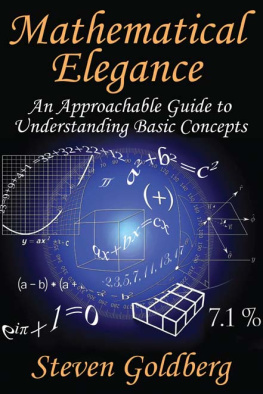
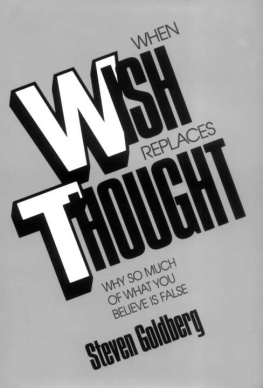




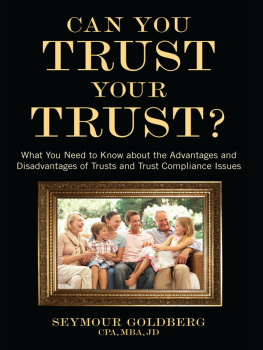





![Debra Anne Ross [Debra Anne Ross] - Master Math: Basic Math and Pre-Algebra](/uploads/posts/book/119083/thumbs/debra-anne-ross-debra-anne-ross-master-math.jpg)
